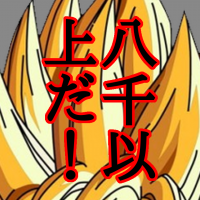Mesaĝoj: 129
Lingvo: English
PrimeMinisterK (Montri la profilon) 2020-aprilo-08 03:30:50
I am thinking that I won't really start to grasp these until I have a chance to practice writing them, so if anyone can be kind enough to provide some things for me to try to translate and correct my errors, I'd be very appreciative.
The more the better.
nornen (Montri la profilon) 2020-aprilo-08 04:18:28
This is the man I saw yesterday.
This is the man who followed us home.
Please meet the farmer whose produce we always buy.
Please meet the farmer whose produce is always fresh and tasty.
Please put the teapot onto the table.
The teapot is sitting on the table.
There is a book under the cupboard.
Who shoved the book under the cupboard?
This car is 2 metres long.
The door is 2 metres high and 1 metre wide.
First, we were sitting by the fireplace, but for supper we sat down at the kitchen table.
PrimeMinisterK (Montri la profilon) 2020-aprilo-08 05:50:59
Here's what I got. You know I'm in bad shape when I looked at the first sentence and said, "Okay, now how do you say 'this' in Esperanto." I really suck.
nornen:Ĉi tiu estas la viron vidis hieraŭ.
This is the man I saw yesterday.
This is the man who followed us home.
Ĉi tiu estas la viro kiu postiris nin.
nornen:Please meet the farmer whose produce we always buy.Bonvolu renkonti la terkulteristo kies productaĵon ĉiam ni aĉetas.
Please meet the farmer whose produce is always fresh and tasty.
Bonvolu renkonti la terkulteristo kies productaĵo ĉiam estas freŝa kaj bongusta.
* I'm really not sure if I should use the infinitive in this situation, or if I should say "renkontas."
* I found multiple words in dictionary for "farmer." Hope I used the right one.
nornen:Bonvolu meti la teujon sur la tablo.
Please put the teapot onto the table.
The teapot is sitting on the table.
La teujo sidas sur la tablo.
nornen:Estas libro sube la ŝranko.
There is a book under the cupboard.
Who shoved the book under the cupboard?
Kiu puŝis la libron sur la ŝranko?
* I'm not sure if I should use "estas" for there is. I read something that said "jen" can mean "there is" or "there are." I read something else that said "jen estas" was the proper phrase.
nornen:This car is 2 metres long.La pordo estas du metroj longa.
The door is 2 metres high and 1 metre wide.
La aŭto estas du metroj alta kaj unu metro larĝa.
nornen:First, we were sitting by the fireplace, but for supper we sat down at the kitchen table.Unue, ni sidis apud la kameno, sed pri vespermanĝo ni sidis ĉe la kuireja tablo.
* To me, dinner and supper mean the same thing. But for dinner the dictionary gave me "tagmanĝo" while for supper it gave me "vespermanĝo." I don't understand the difference there.
* I'm not sure if "kitchen table" should be "kuireja tablo" or "kuirejo tablo." My natural indication is to say "kuirejo tablo," but some things I've seen in Esperanto would indicate that the -o gets changed to an -a in a case like this.One example is "Kristnaska Kanto," the Experanto title of Dickens's A Christmas Carol. I would naturally think it should be Kristnasko Kanto.
nornen (Montri la profilon) 2020-aprilo-08 06:21:27
Ĉi tiu estas la viroYou must not obmit relative pronouns, although they may be omitted in English. Every realtive clause must have its relative pronoun.n, kiun mi vidis hieraŭ.
Ĉi tiu estas la viro, kiu postiris nin hejmen.
Bonvolu renkonti la terkulturiston, kies produktaĵon ĉiam ni aĉetas.
Bonvolu renkonti la terkulturiston, kies produktaĵo ĉiam estas freŝa kaj bongusta.
Bonvolu meti la teujon sur la tablon.Accusative of direction:
La teujo sidas (staras/estas/troviĝas) sur la tablo.
sur la tablon = onto the table (movement)
sur la tablo = on the table (position)
Estas libro subAgain accusative of direction:ela ŝranko.
Kiu puŝis la libron sub la ŝrankon?
sub la ŝrankon = (moving something) under the cupboard (movement)
sub la ŝranko = (being) under the cupboard (position)
La pordo estas du metrojn longa.Accusative of measure.
La aŭto estas du metrojn alta kaj unu metron larĝa.
Unue, ni sidis apud la kameno, sed por (la) vespermanĝo ni eksidis/sidiĝis ĉe la kuirejan tablon.Accusative of direction again.
PrimeMinisterK (Montri la profilon) 2020-aprilo-08 06:35:40
nornen:I will only correct the errors relating to the use of the accusative and the relative pronouns, as this is what you asked for.Okay, well thanks.Ĉi tiu estas la viroYou must not obmit relative pronouns, although they may be omitted in English. Every realtive clause must have its relative pronoun.n, kiun mi vidis hieraŭ.
Ĉi tiu estas la viro, kiu postiris nin hejmen.Bonvolu renkonti la terkulturiston, kies produktaĵon ĉiam ni aĉetas.
Bonvolu renkonti la terkulturiston, kies produktaĵo ĉiam estas freŝa kaj bongusta.Bonvolu meti la teujon sur la tablon.Accusative of direction:
La teujo sidas (staras/estas/troviĝas) sur la tablo.
sur la tablon = onto the table (movement)
sur la tablo = on the table (position)Estas libro subAgain accusative of direction:ela ŝranko.
Kiu puŝis la libron sub la ŝrankon?
sub la ŝrankon = (moving something) under the cupboard (movement)
sub la ŝranko = (being) under the cupboard (position)La pordo estas du metrojn longa.Accusative of measure.
La aŭto estas du metrojn alta kaj unu metron larĝa.Unue, ni sidis apud la kameno, sed por (la) vespermanĝo ni eksidis/sidiĝis ĉe la kuirejan tablon.Accusative of direction again.
If you're only correcting the accusative errors, I guess that means there are other errors. I was feeling pretty good about those translations, too!
Second, I've never even heard of "accusative of direction" or "accusative of measure."
I admit, this is pretty discouraging.
Metsis (Montri la profilon) 2020-aprilo-08 07:05:24
PrimeMinisterK:Ne paniku!
Second, I've never even heard of "accusative of direction" or "accusative of measure."
I admit, this is pretty discouraging.
There is in Duolingo a pretty good summary when to use the -n ending. Keep going with Lernu's course La teorio Nakamura. It teaches things in manageable chunks.
PrimeMinisterK (Montri la profilon) 2020-aprilo-08 07:23:56
Metsis:Thanks for the encouragement.
Ne paniku!
There is in Duolingo a pretty good summary when to use the -n ending. Keep going with Lernu's course La teorio Nakamura. It teaches things in manageable chunks.
I actually am not doing La teorio Nakamura. Right now I'm doing Kurso de Esperanto. Should I do La teorio Nakamura next? How far should it take me in terms of my understanding of the language?
I felt at first like I was making good progress everyday, but I am really getting bogged down with the correlatives and accusative. I feel like things have ground to a halt as confusion has settled over me.
I also am worried about finding opportunities to practice. As was demonstrated here, I am making errors that I don't even realize I'm making, and I don't have anyone to point them out to me or correct them. So the best I can do is post things on a forum like this and hope someone is nice enough to take the time to show me where I went wrong.
What I need are some friends who are advanced users of the language/penpals to e-mail back and forth with. But I don't know where to find them.
Zam_franca (Montri la profilon) 2020-aprilo-08 08:49:30
PrimeMinisterK:Doing La teorio Nakamura after starting another course is good. You will already know many things, so it won't be a shock to discover new affixes or correlatives, and you will aready know a few words that will help you (e.g. "mi studas en mia laborejo").Metsis:Thanks for the encouragement.
Ne paniku!
There is in Duolingo a pretty good summary when to use the -n ending. Keep going with Lernu's course La teorio Nakamura. It teaches things in manageable chunks.
I actually am not doing La teorio Nakamura. Right now I'm doing Kurso de Esperanto. Should I do La teorio Nakamura next? How far should it take me in terms of my understanding of the language?
I felt at first like I was making good progress everyday, but I am really getting bogged down with the correlatives and accusative. I feel like things have ground to a halt as confusion has settled over me.
I also am worried about finding opportunities to practice. As was demonstrated here, I am making errors that I don't even realize I'm making, and I don't have anyone to point them out to me or correct them. So the best I can do is post things on a forum like this and hope someone is nice enough to take the time to show me where I went wrong.
What I need are some friends who are advanced users of the language/penpals to e-mail back and forth with. But I don't know where to find them.
After you've finished the teorio Nakamura, you will have, I guess, an A2 level, and if you practice Eo you'll quickly reach a B1 level.
Also, please see Kion fari post la kurso de lernu?.
flanke (Montri la profilon) 2020-aprilo-08 09:19:47
PrimeMinisterK:Just do La Teorio Nakamura,it's really good.
Should I do La teorio Nakamura next?
Zam_franca (Montri la profilon) 2020-aprilo-08 13:00:15
Do you have any charger that I could use?
I have many allergies.
He is a 16 000 times liar.
I love travelling in other countries.
She met him yesterday.
We often take the train in order to see our friends in Geneva.
If you had a friend that lives in a foreign country, would you visit him?




